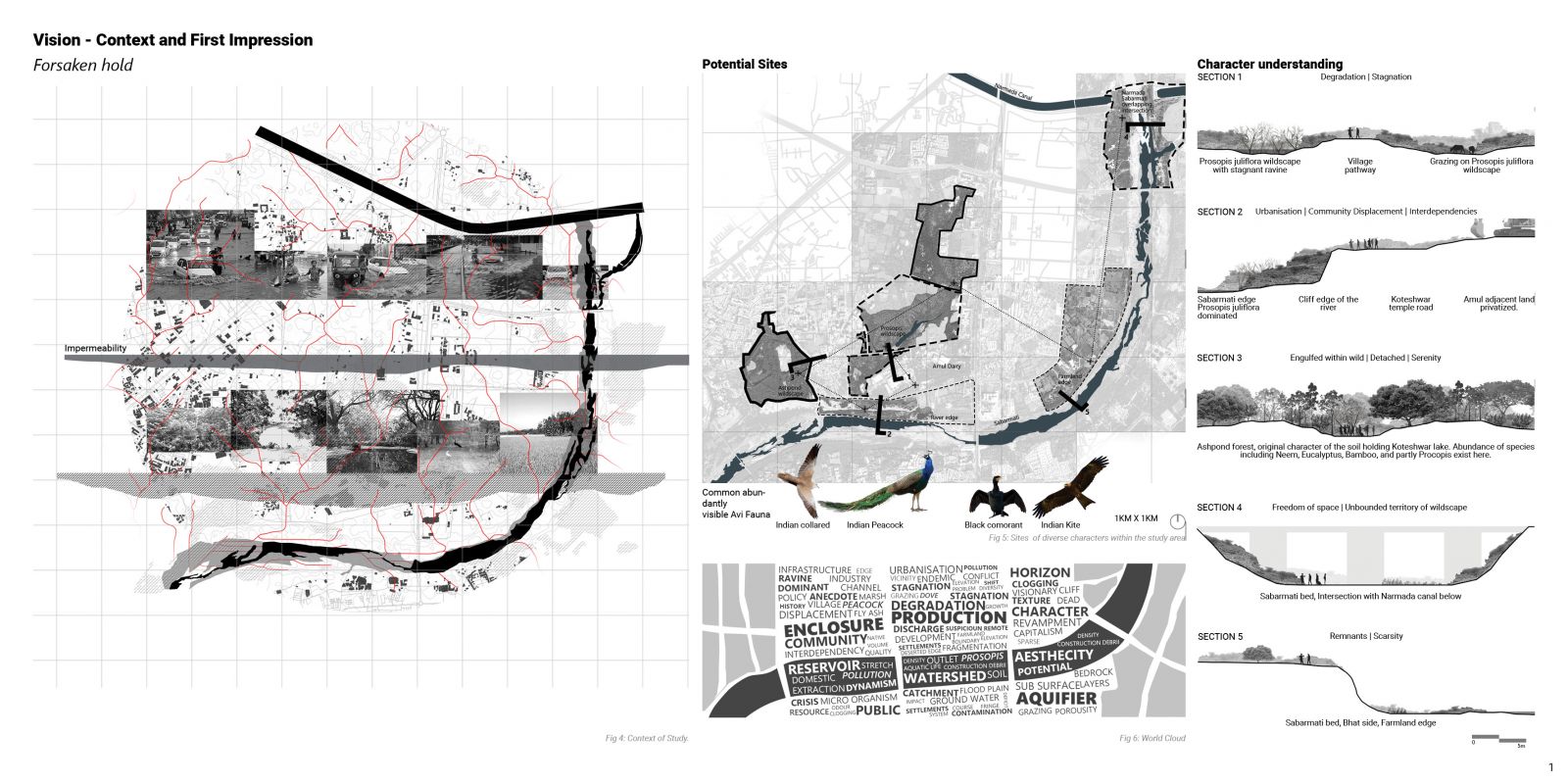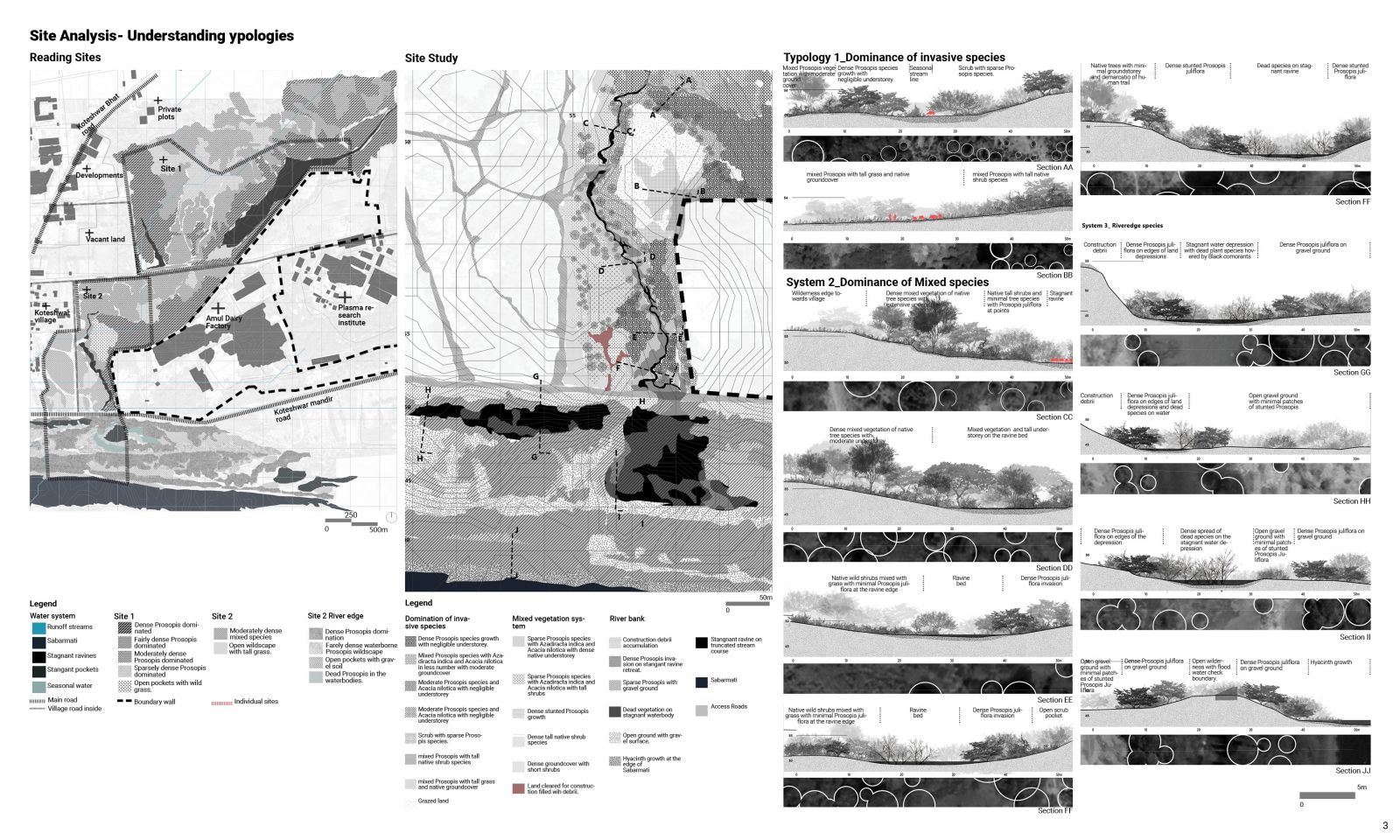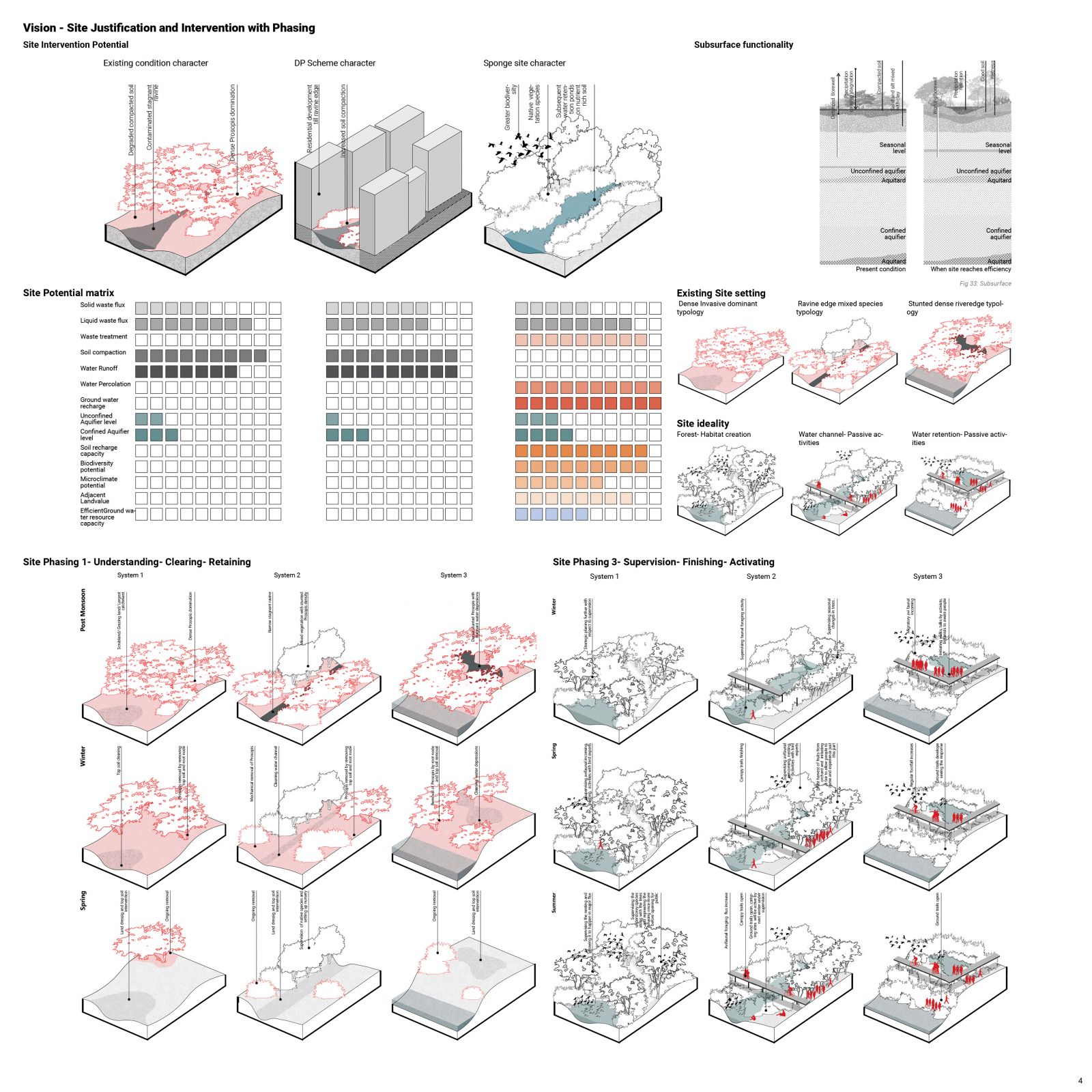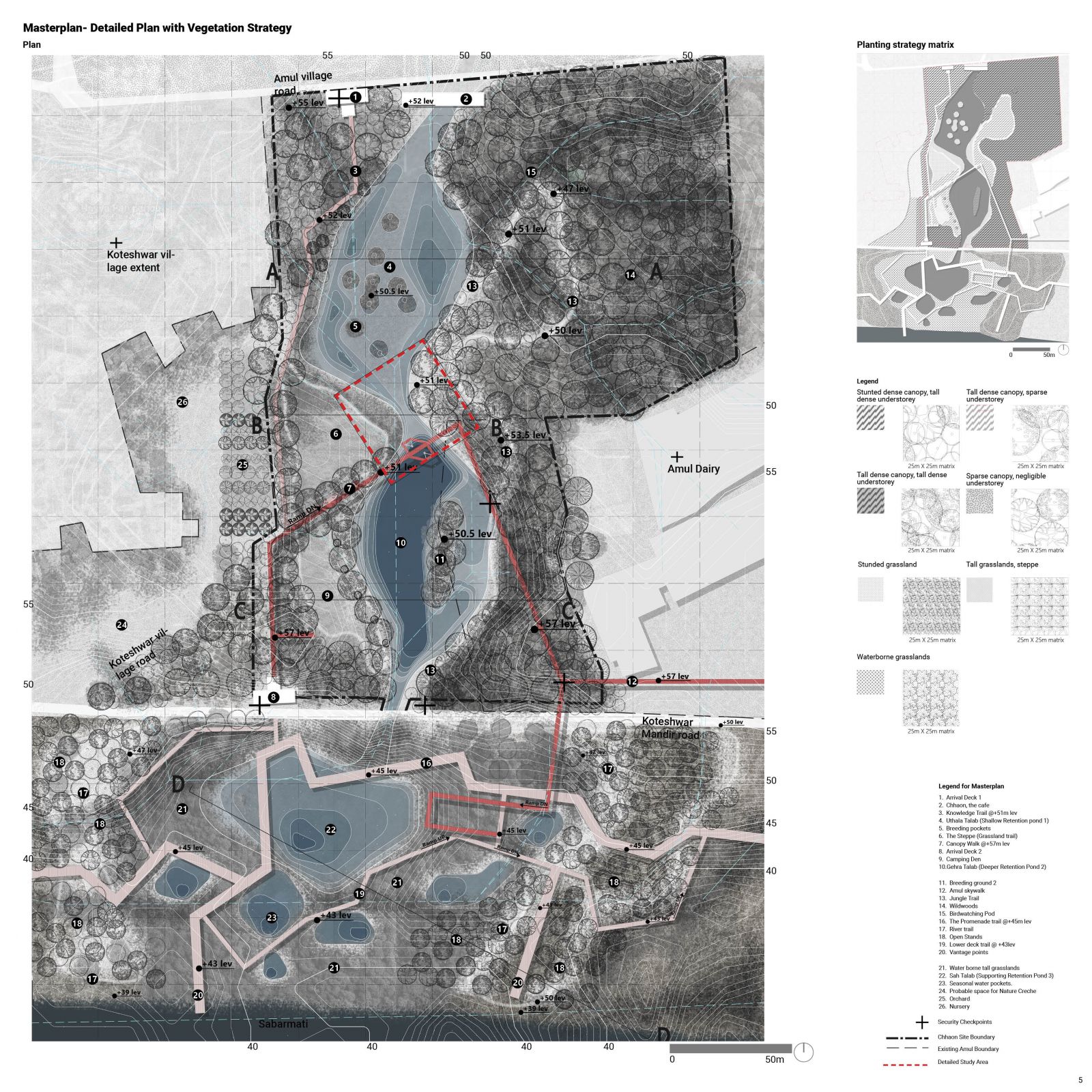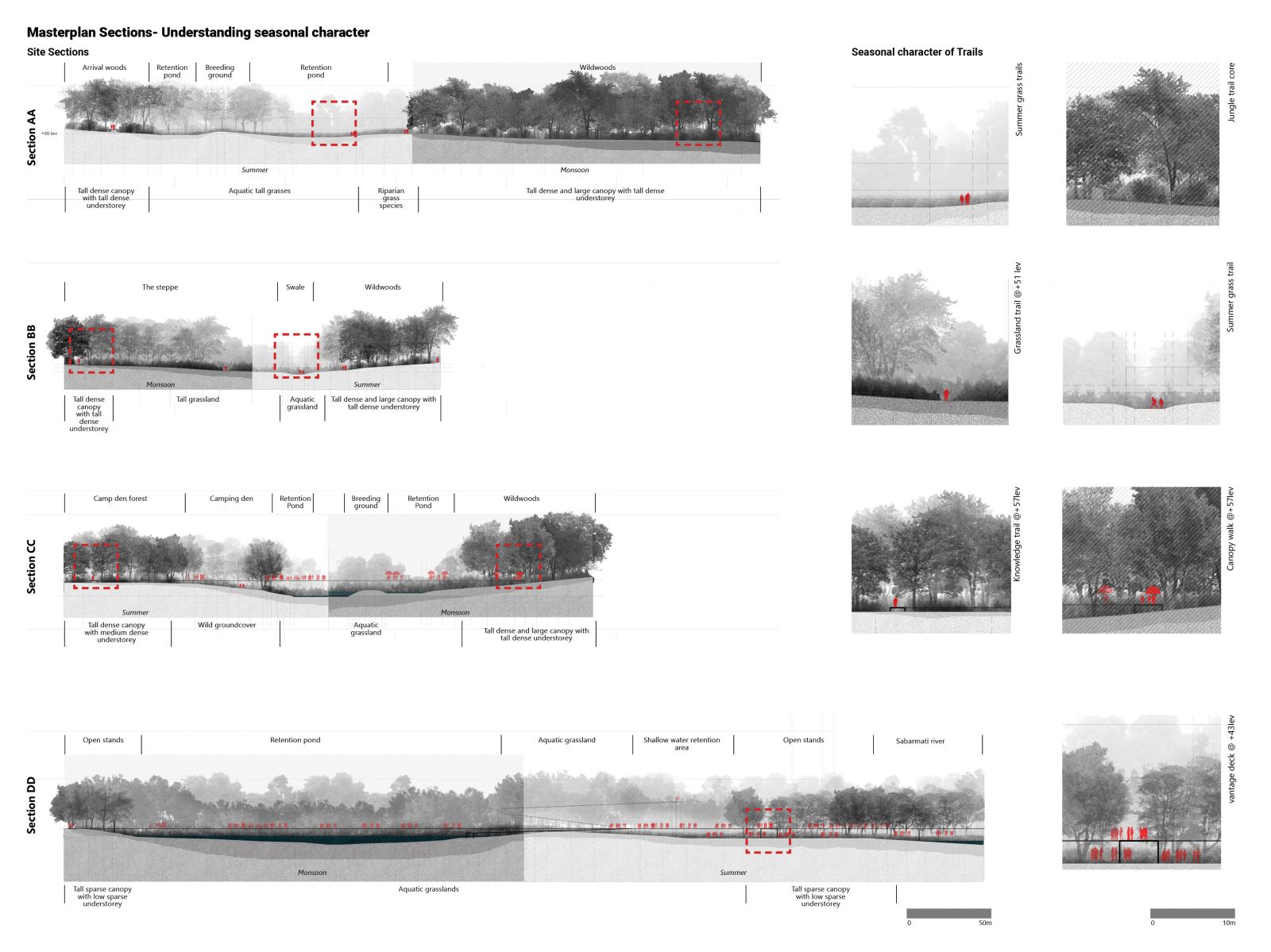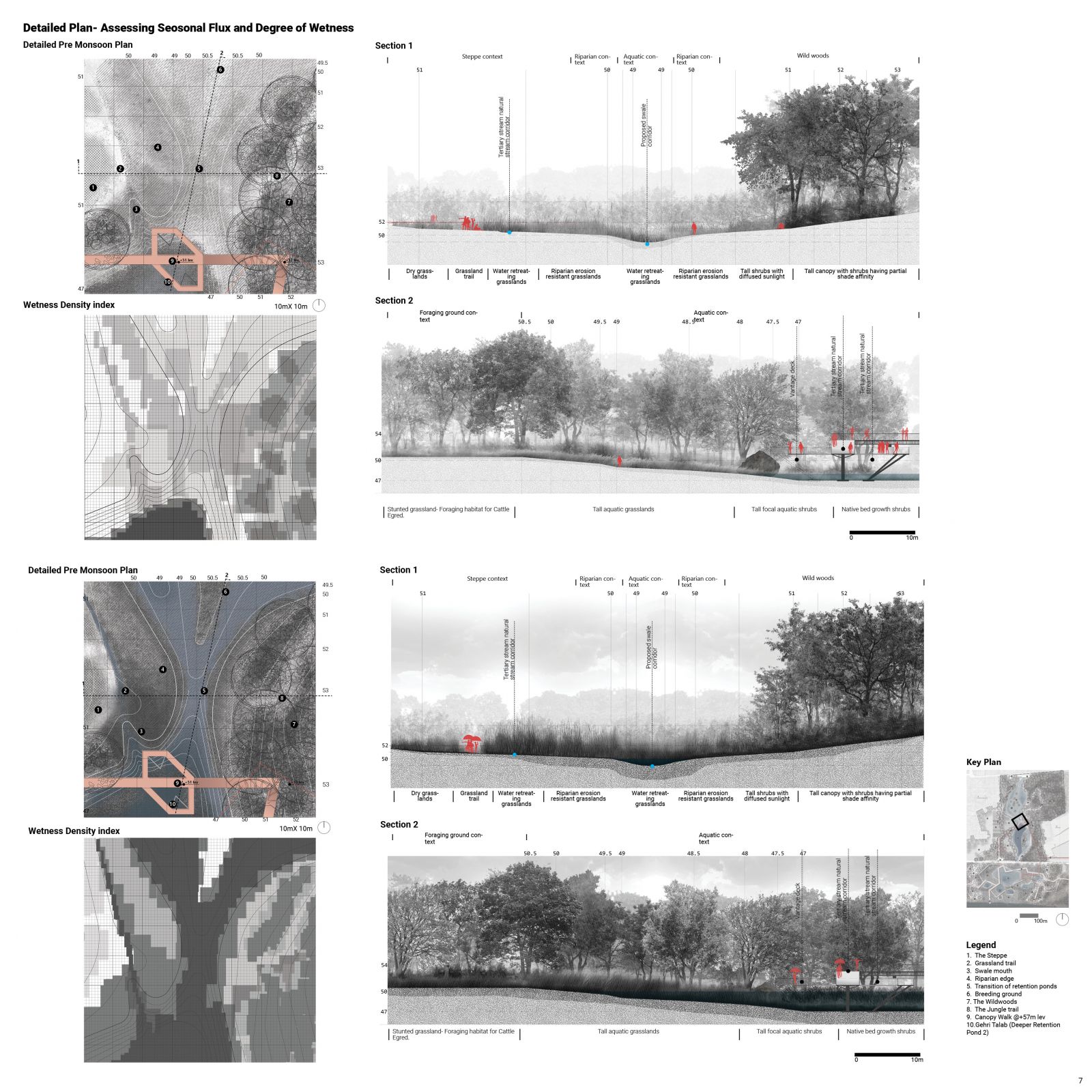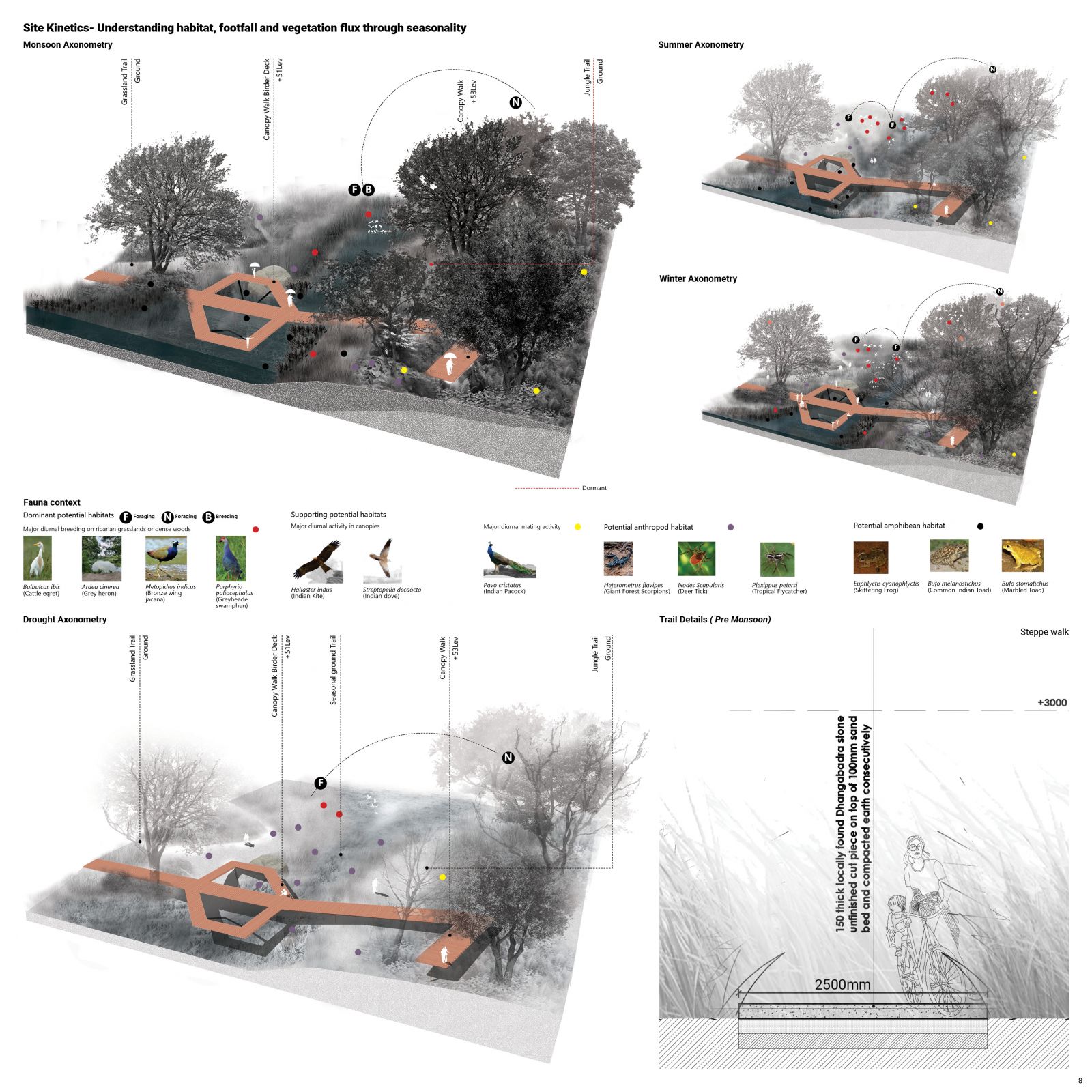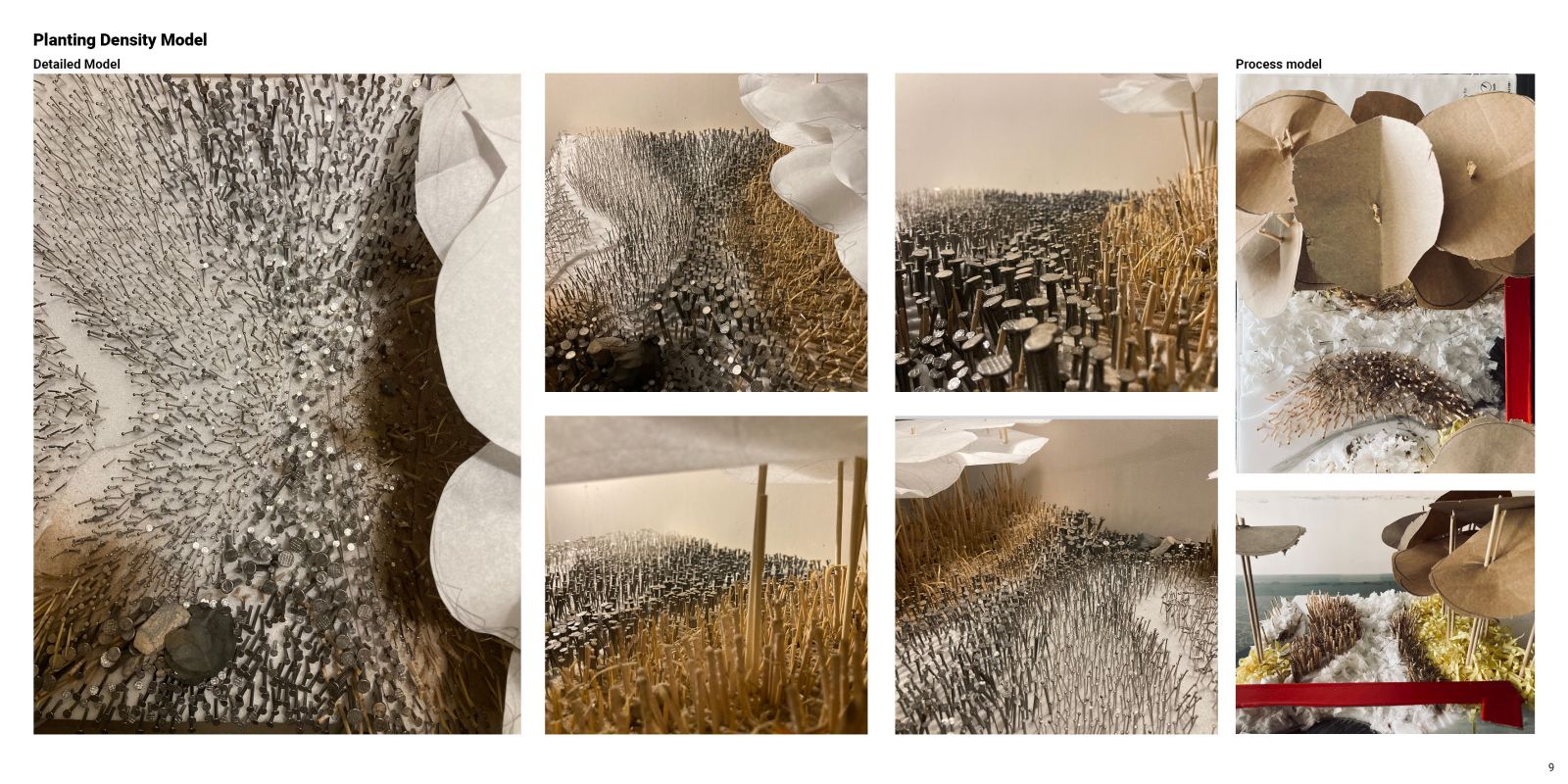Your browser is out-of-date!
For a richer surfing experience on our website, please update your browser. Update my browser now!
For a richer surfing experience on our website, please update your browser. Update my browser now!
The title “Chhaon” literally meaning shadow has been philosophically denoted here to mean respite that defines the approach and the final character of the site. Ravine landscapes are considered most degraded ecosystems, and its restoration through tree establishment along with soil and water conservation are effective conservation measures. With the proposed development in the Koteshwar -Bhat area, the last remaining and completely disconnected ravine to Sabarmati is under threat. Although degraded, it has a high recharge potential due to the nature of aquifer. Thus, maximizing the site water retention will further allow extensive groundwater recharge over the years through a porous fabric of land. With the era of urban floods due to growing scarcity of sponge sites this intervention is imperative to hold water and at the same time provide a valuable nature respite in the middle of the city. Therefore, as “Chhaon” the site provides respite to one of its protagonists, the ‘water’ traveling distances and reaching the site, and with the shadow of the eventual dense vegetation, the soil conservation establishes ‘natural habitats’. This in turn provides an experiential tranquillity to ‘humans’ who are its secondary protagonists.
View Additional Work